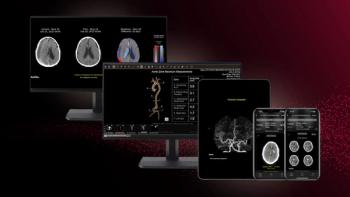
Lafayette Pharmaceuticals acquires Victoreen and Nuclear Associates
Companies will operate under Inovision nameBarium contrast agent manufacturer Lafayette Pharmaceuticals of Yorba Linda, CA, announced this month the purchase of Victoreen and Nuclear Associates for an undisclosed amount. The deal brings Lafayette,
Companies will operate under Inovision name
Barium contrast agent manufacturer Lafayette Pharmaceuticals of Yorba Linda, CA, announced this month the purchase of Victoreen and Nuclear Associates for an undisclosed amount. The deal brings Lafayette, Victoreen, and Nuclear Associates together under the umbrella of newly established medical imaging firm Inovision, also of Yorba Linda. Each company will operate separately, including Nuclear Associates, which has been a division of Victoreen since 1978.
Although the deal closed in January, it was not announced until a new executive management team had created a name for the entity. Former Lafayette president, CEO, and founder Herbert Hoebel is president and CEO of Inovision.
The acquisitions give Inovision access to each companys experience in the medical imaging market. Cleveland-based Victoreen was founded in 1928. It manufactures and distributes instruments for the detection and measurement of radiation. Victoreen is credited with the development of the first ion chamber.
Nuclear Associates of Carle Place, NY, has developed quality control and radiation protection products for medical imaging since 1966. It boasts a line of more than 2500 products, from breast phantoms to digital CR packs. Lafayette contributes its experience as a manufacturer and supplier of barium contrast agents for gastrointestinal imaging.
The agreement effectively consolidates the product lines of the three companies, according to Martin Ratner, vice president and general manager of Nuclear Associates. Inovision is a buyer familiar with the medical imaging business, according to Ratner, and as parts of Inovision, all three companies will be able to provide a broader range of products to the clients they serve: x-ray departments, equipment dealers, and OEMs.
Inovision is what I would call a strategic buyer, Ratner said. (It) understands the business and calls on the same customers.
Inovision executives declined to comment specifically on Inovision products under development. According to Ratner, however, the market will probably see more new products and faster product launches, as well as an aggressive corporate agenda of pursuing other medical imaging acquisitions. Inovision reports annual sales of approximately $50 million and employs 330 people worldwide.
Newsletter
Stay at the forefront of radiology with the Diagnostic Imaging newsletter, delivering the latest news, clinical insights, and imaging advancements for today’s radiologists.




























